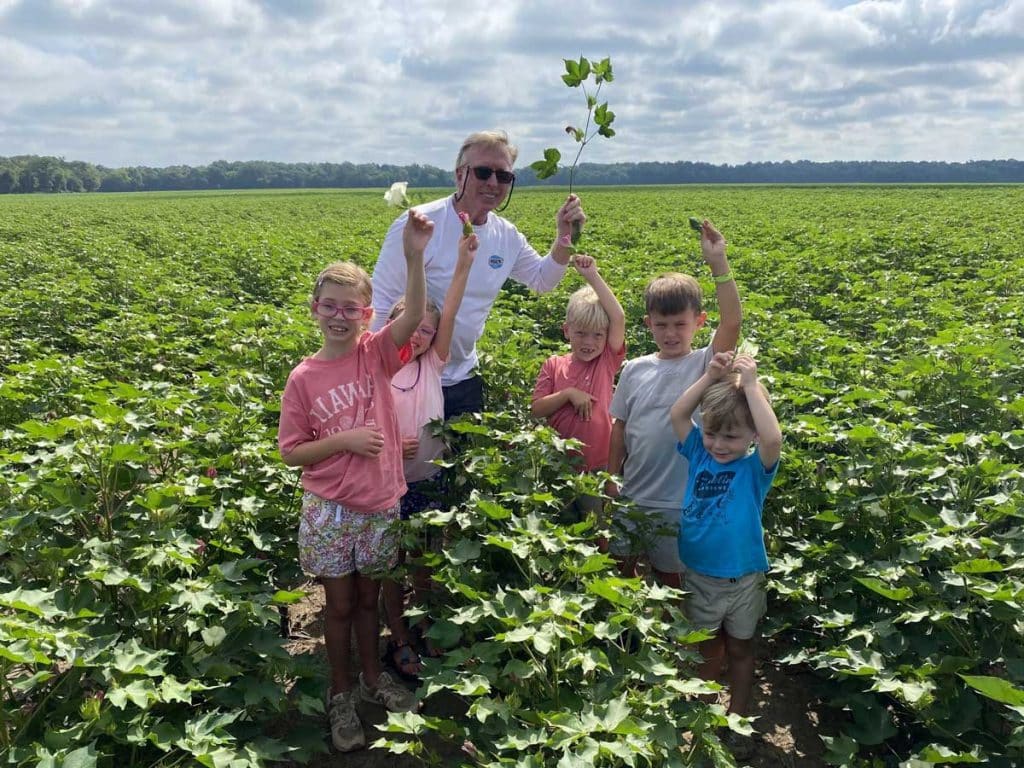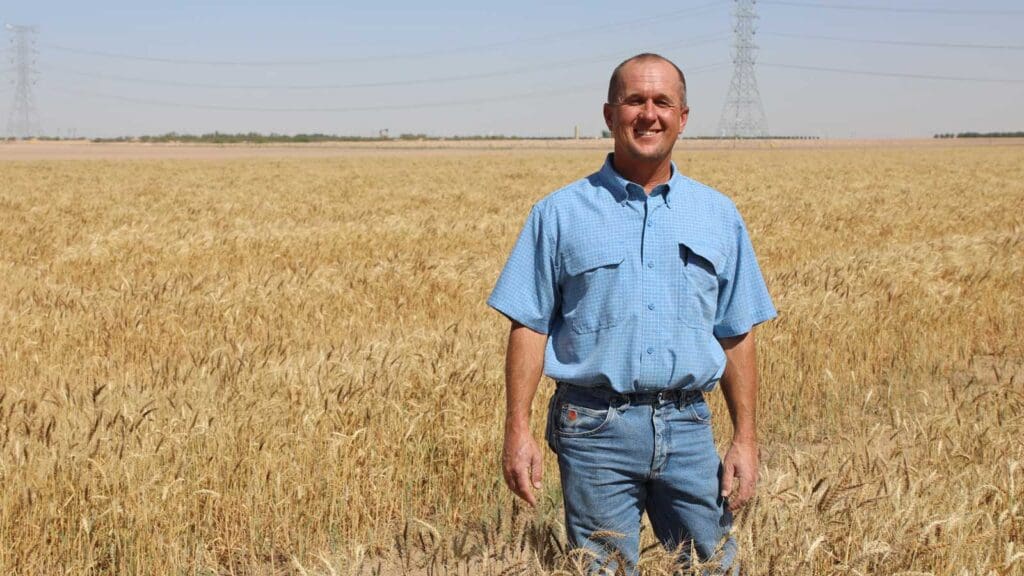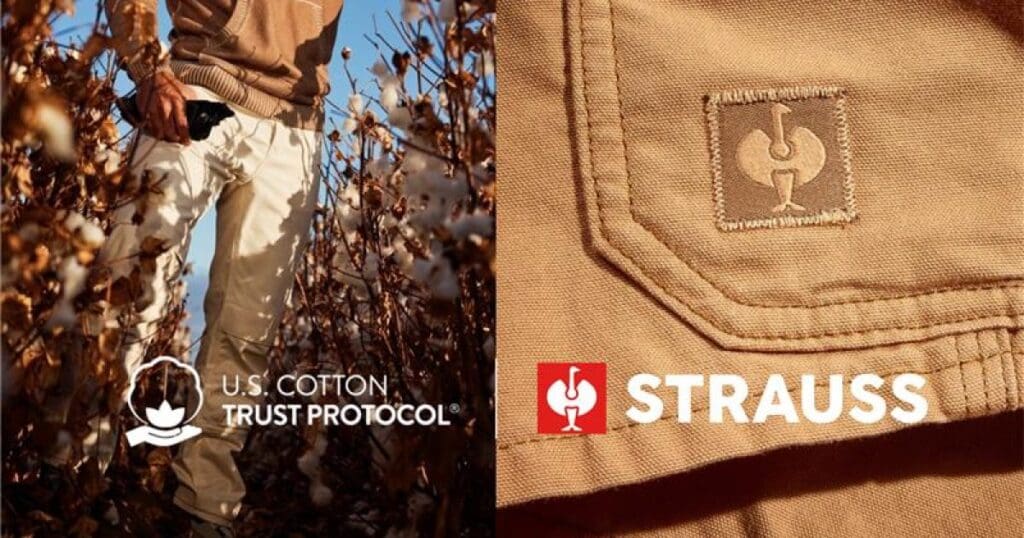Q: Please introduce yourself and tell us about your farm.
A: My name is Rusty Darby and I’m a cotton grower and member of the U.S. Cotton Trust Protocol. My farm is in South Carolina which means we have rolling clay hills. I have produced cotton for 57 years and started farming with my dad and grandfather. For the last 12 years I have farmed with my son-in-law Reed.
Q: What does sustainability mean to you?
A: To me, sustainability means ensuring that I am a good steward of the land that I’m entrusted to care for. It’s my responsibility to leave this land better than I found it. I’m constantly mindful of what I’m doing this year is not going to be damaging or harmful to what I want to do for years to come.
A large part of sustainability is about practices we use and the accuracy with which we use them. Knowing my cotton fields, seeing what’s going on there, and knowing what I need to do next helps me be as sustainable and as I can.
Q: Why did you join the U.S. Cotton Trust Protocol?
A: I appreciate that the Trust Protocol is a unified effort for the U.S. cotton industry that allows us to explain our sustainable cotton growing practices. By documenting my practices, the program allows me to keep my records in order. Every decision I make compounds and makes a difference in my crop not only for this year and the next—but for years to come. The aggregated sustainability data that I receive helps me see how I can best manage my crop this year and changes I need to make for next year.
Q: Can you please explain the plant growth process?
A: From that little seed cracking the crust on the ground to the fluffy white cotton bolls that we’ll harvest–there’s a lot that goes in to producing a crop. When the plant begins growing, two little leaves, the former halves of the seed, are what first emerge from the soil. From here, the main stem starts to grow.
A bud—which is the size of a pinhead to start, will appear on the stem next few weeks. These will continue to grow into what is called a square…though it’s really in the shape of a triangle at the beginning. I planted in early April, so I want to find my first square around June 1st—or six weeks after planting. Three weeks after that, the square turns into a bloom. When the bloom first opens it is a white flower, then it self-pollinates, and turns into a pink flower. The next day it will become darker colored and by the third day it falls off. From there, it starts to form the boll. It takes about 50 days from this point for a boll to become harvest ready.
We’ll likely start harvest in September, so I’ll be constantly walking my fields, evaluating the number of bolls and the quality.
We know this can be hard to visualize so make sure to watch an animation by the Trust Protocol that outlines the lifecycle of a cotton plant. 
Q: As you monitor crop growth and maturity, what steps do you take to help ensure you are growing high quality sustainable cotton?
A: To grow a sustainable cotton crop we examine every decision for precision, which is possible thanks to technology.
An example of this is how we monitor our inputs. We use maps of our fields which contrast the weak versus strong soils and allow us to customize fertilizer rate— this is known as variable rate application. Computers coordinate with GPS satellites, telling us exactly where and how much fertilizer to use. This prevents runoff and waste. The computer calculates the rates as we go across the field, ensuring products are only used where needed. This also reduces the number of times we use our equipment, which decreases the amount of fuel we use. Precision is critical to ensure we are environmentally and economically responsible.
Additionally, for the last 30 years or so, we have worked in collaboration with seed companies on test plots. By observing the different seed varieties—we can see how insects affect the crop, monitor fertility and how the plants react to the weather. The observations and data from these plots provide growers with information that allows them to see first-hand how these products impact the environment and it helps them decide which seed is best for their farms.
Q: Please share with us how you monitor your crop’s water needs and the amount of rainfall you must have each year to grow cotton.
A: My cotton fields are purely rain fed. I don’t have a source of water, so that means I don’t have a way to irrigate. To grow an ideal cotton crop we need about an inch of rain a week, so that means I’m always seven days away from a drought.
What happens if the crop doesn’t get the amount of rain it needs? It goes into stress. If the plant’s not getting enough water, it’ll start shedding the fruit. You’ll start seeing this if you look under the plants. That means we need more rain. This is why I regularly walk my fields.
Q: How does the individual data you receive as a Trust Protocol grower help you make decisions? Were there any adjustments you’ve made because of the data from last growing season?
A: Looking at soil health and the mechanics of the soil is one area where the Trust Protocol is helping me be more sustainable. With the data I’ve received, I’ve changed the way I cut my cotton stalks to better hold water through the winter. By doing this, I’m slowing down the rate at which the water moves—so the soil stays in my fields rather than washing away.
The top two inches of soil are so important as that is where the microbial activity is. Maintaining my soil is important because it leads to plant health. Healthy soil allows the plant roots to grow and find the nutrients they need.
We also practice 100% no-till as it’s more friendly to the plants and soil. One of my first jobs when I was young was plowing cotton, which meant mechanically dragging plow sweeps in between the rows to pull weeds. While it kept the weeds away, it tore up the feeder roots of the cotton. We were crippling the plant from getting fertilizer, but we got rid of the weeds. This is a prime example of doing the best we could with the resources we had at the time but with the knowledge and additional information we have today, we have changed our practices to continuously improve which is a cornerstone of the Trust Protocol.




